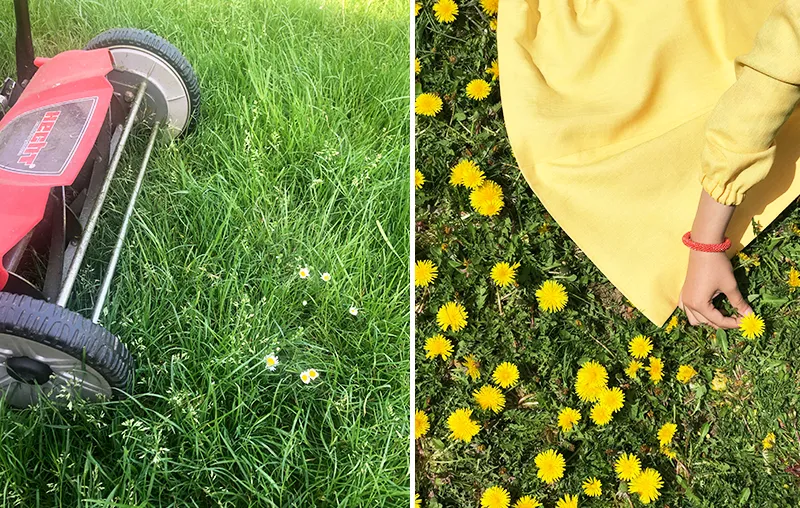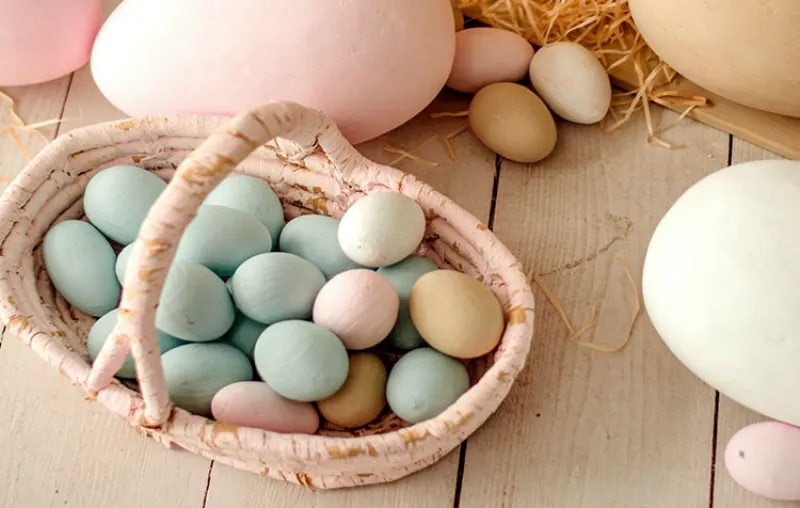What is behind "Mower-free May" and why should you take part? If you are interested in sustainable gardening and are looking for clear answers to these questions, you've come to the right place! Unfortunately, an unmown lawn doesn't have a particularly good image in this country. It may even cause a shake of the head or two in the neighborhood.
Yet May in particular - and spring in general - offers an ideal opportunity to make a noticeable difference with a non-mown garden lawn. After all, nature awakens from hibernation in spring! A colorful variety of flowers break through the ground, wild bees and other insects find their nectar and birds start chirping in the garden again.
In this article, I would therefore like to explain briefly and concisely what mow-free May is all about. You'll find out where the initiative comes from, the many benefits it brings and how you can get involved. I'll also give you a few effective tips for more biodiversity along the way. Let's go!
Here you can find a short overview in advance:
Origin: What is "No Mow May" and where did the idea come from?
The "No Mow May" was first from the British nature conservation organization "Plantlife" launched and asks all garden owners not to mow their lawns in May.
The annual campaign initially began as a local initiative and aimed to increase biodiversity in urban and rural gardens by growing wildflowers and encouraging wild bees, beetles, butterflies and other insects, among other things, to grow. Shelter and a wide range of food in your own garden.
However, the movement is now also taking place worldwide. more and more followerswho simply leave their lawn mowers in the garden shed in spring or at least mow their lawns much less often than they used to.
Advantages: Why should you just let the lawn grow and not mow it?

There are really good reasons to take part in "No Mow May" from now on. Instead of pushing the lawnmower over your own lawn every week or let the robotic lawnmower drive, for example, you can simply sit back and relax.
Here I have you all important advantages listedshould motivate you to let your lawn grow more often in the future:
- Promote biodiversity: A lawn that is always kept short by robotic lawn mowers is one of many reasons for the Environmental problem of species extinction - especially for the dramatic decline in insects. By not mowing your lawn, however, you are providing animals with a new habitat and vital food.
- Reduce the effort involved in gardening: Less mowing also means less work! The mowing-free month of May is therefore particularly suitable for all of us who have a rather low-maintenance garden prefer. Another nice side effect of not mowing the lawn is that it automatically reduces water and energy consumption.
- Admire the colorful diversity of wild plants: Many flowering plants grow in lawns, which are often regarded as so-called "weeds", but are incredibly important for countless native caterpillars, butterflies, beetles and wild bees. For example, dandelions, clover, daisies, ribwort plantain, stinging nettle, goutweed, buttercups and chickweed have a high ecological value - and also bring some visual variety to boring green lawns.
- Enjoy wild herbs: Many of the plants mentioned can also be eaten or drunk! For example, you can make a wild herb salad from dandelion leaves and goutweed or prepare a nettle tea. But it's also delicious to simply chew on a few daisies.
- Raising awareness of environmental problems and ecological diversity: A visibly unmown lawn is a quicker way to start a conversation. Your conscious participation in "Mow-free May" therefore also offers the opportunity to raise social awareness of the importance of mowing. Biodiversity and the Environmental problems of our time to promote.
Take part: How can you take part in No Mow May?

You want that Stop insect mortality and also enjoy the other benefits of an unmown lawn? Then you can easily take part in mow-free May (or even June)! All you have to do is keep your feet still and watch your lawn grow. It couldn't be more relaxed! 😉
To prevent any concerns from your neighbors, you can talk to them in person. talk openly about your personal reasons for participating in "No Mow May". In the best case scenario, you will inspire your immediate environment to get involved too!
At the end of the "trial month" you then make a final assessmenthow your garden has changed. On this basis, you can then decide whether and how to continue this species protection measure in your own green space in the future.
Tips: Apart from "No Mow May", what else can you do in the garden for biodiversity?

As soon as your personal, mow-free May endsyour commitment to biodiversity does not automatically have to end. Instead, with a few more simple ideas, you can continue to contribute to the Halting species extinction.
Here I have you important tipsThe implementation of which also helps insects and other garden animals:
- Use potting soil without peat
- A Create a wildflower corner in the garden
- Provide structures with piles of stones, leaves and deadwood
- Creating a sump bed (e.g. for butterflies, dragonflies and frogs)
- On invasive trees and shrubs (e.g. butterfly lilac)
- Focus on native plants instead (e.g. hawthorn and blackthorn)
Mowing-free May: just let nature do its thing instead of mowing the lawn!
The "Mower-free May" is therefore a wonderful opportunity to experience nature in all its diversity. So just give it time to unfold. And use the time you gain to observe the hustle and bustle in the garden.
I can from personal experience confirm that you really feel like taking part in mowing-free May every year and cutting the lawn less and less often. 😉
"Any stupid boy can crush a beetle. But all the professors in the world can't make one."
Arthur Schopenhauer (more at Environmental protection quotes)
Oh, one more important thing at the end! If you mow your lawn (again at some point), then try to use a lawn and animal-friendly cylinder mower (gives here*) and set it fairly high so that the plants are protected from drying out and can regrow well. By using from the inside outyou also give insects and other garden animals the chance to get to safety.
Do you have any questions, suggestions or your own experiences with mow-free May that you would like to share? Then I look forward to your comment.
Stay environmentally conscious and sustainable,

PS: In the articles about the bee friendly garden and Bird friendly garden I will provide you with more tips on how you can provide habitats and food for garden animals. Have fun and good luck with the implementation!









